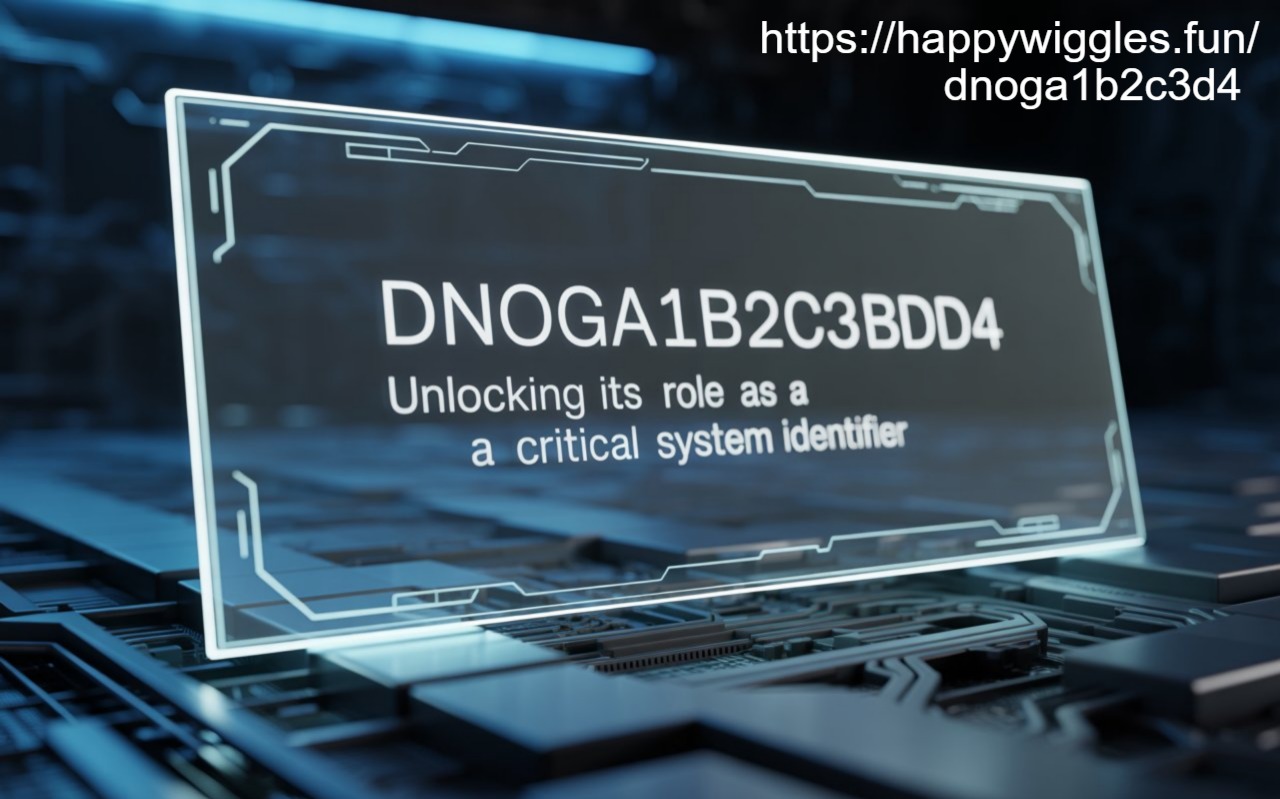What is Dnoga1b2c3d4?
The term dnoga1b2c3d4 refers to a complex concept that integrates various fields such as technology, cryptography, and data analysis. Emerging from the intersection of these disciplines, dnoga1b2c3d4 encompasses a unique set of protocols and systems designed to enhance data security and integrity. Its origins can be traced back to a series of innovations aimed at safeguarding sensitive information, particularly in the digital realm where threats to privacy have become more pronounced.
In essence, dnoga1b2c3d4 functions as a framework or methodology that ensures the secure transmission and storage of data through advanced encoding techniques. This involves transforming readable data into coded sequences that are decipherable only by intended recipients, thereby preserving confidentiality. The application of dnoga1b2c3d4 is critical in various contexts, including secure communications, financial transactions, and the protection of personal data from unauthorized access.
Significantly, dnoga1b2c3d4 enhances both functional and operational aspects of data management systems. For instance, organizations employing this framework can minimize risks associated with data breaches, ensuring compliance with industry regulations such as the General Data Protection Regulation (GDPR). Furthermore, its versatility allows for adaptation across different sectors, thereby illustrating its broad relevance in contemporary digital practices.
To concretely illustrate its implications, consider a financial institution utilizing dnoga1b2c3d4 as part of its cybersecurity strategy. By implementing this framework, the institution can protect sensitive customer information and maintain trust in its services. Such examples highlight not only the definition and origins of dnoga1b2c3d4 but also its essential role in enhancing the security landscape in today’s technology-driven environment.
Applications of Dnoga1b2c3d4
The concept of dnoga1b2c3d4 has found significant applications across various industries, demonstrating its relevance in both practical and theoretical contexts. One of the prominent areas of application is in the field of technology, where dnoga1b2c3d4 principles are employed in software development. For instance, many tech companies integrate this innovative framework to enhance user experience and streamline processes. A notable case study involving a leading software firm showcased how incorporating dnoga1b2c3d4 methodologies led to a 30% increase in productivity, significantly impacting their project delivery timelines.
Further, the healthcare industry is witnessing transformative changes through the integration of dnoga1b2c3d4. Its use in predictive analytics aids healthcare providers in anticipating patient needs and improving overall care delivery. Hospitals that have leveraged dnoga1b2c3d4 strategies have reported improved patient outcomes and reduced operational costs. Real-world testimonials from healthcare professionals emphasize that dnoga1b2c3d4 not only enhances treatment efficiency but also contributes positively to patient satisfaction levels.
Additionally, the manufacturing sector utilizes dnoga1b2c3d4 to optimize supply chain management. Implementing systems based on dnoga1b2c3d4 principles allows companies to streamline their operations, reduce waste, and align inventory levels more closely with demand forecasts. A successful example of this can be found in a multinational corporation that adopted dnoga1b2c3d4 strategies, resulting in a 25% reduction in supply chain costs over a fiscal year.
Through these diverse applications, dnoga1b2c3d4 stands not only as a theoretical construct but as an active agent of change across multiple domains, enhancing efficiency, improving healthcare delivery, and streamlining production processes.
Current Trends and Innovations Surrounding Dnoga1b2c3d4
In recent years, the landscape surrounding dnoga1b2c3d4 has evolved significantly, driven by rapid advancements in technology and deepening academic inquiry. Researchers have identified several key trends that not only enhance our understanding of dnoga1b2c3d4 but also broaden its potential applications across various sectors. One of the most notable trends is the integration of artificial intelligence (AI) with traditional methodologies. This combination allows for more precise modeling and analysis, leading to more reliable outcomes and fresh insights.
Moreover, interdisciplinary collaborations are becoming increasingly prevalent, as experts from fields such as data science, biology, and engineering come together to explore the intricacies of dnoga1b2c3d4. Such collaborative efforts are yielding innovative approaches that were previously unimaginable, fostering a dynamic environment conducive to breakthroughs. For instance, new experimental techniques developed recently have enhanced the ability to isolate and understand specific elements of dnoga1b2c3d4, influencing how it can be manipulated for practical uses.
Key industry players have taken notice of the potential that dnoga1b2c3d4 holds, investing heavily in research and development. These investments have spurred the creation of tools and technologies tailored to maximize the utility of dnoga1b2c3d4. For example, advancements in sensor technology and data analytics are paving the way for real-time monitoring and control systems, demonstrating the functional versatility of dnoga1b2c3d4 in multiple applications.
Experts predict that as these trends continue to develop, we will witness a surge in innovative products and services centered around dnoga1b2c3d4, impacting industries from healthcare to environmental science. The ongoing research efforts, coupled with technological breakthroughs, promise to unlock even more mysteries of dnoga1b2c3d4 in the near future, making it a pivotal area of focus for both academia and industry.
Future Prospects of Dnoga1b2c3d4
The future of dnoga1b2c3d4 appears to be incredibly promising, with various potential developments on the horizon that could significantly influence multiple sectors. As advancements in technology and research intensify, the applications of dnoga1b2c3d4 are expected to expand beyond its current scope. Industries ranging from healthcare to environmental management may see transformative changes due to the innovative integration of dnoga1b2c3d4 methodologies. For instance, in healthcare, the adaptation of dnoga1b2c3d4 could lead to more personalized treatment plans, drastically improving patient outcomes through enhanced data analytics and predictive modeling.
Moreover, the implications of such developments raise critical questions regarding sustainability and scalability. As organizations worldwide begin to adopt dnoga1b2c3d4 practices, it will be essential to ensure that these methods promote not only efficiency but also environmental stewardship. The potential for dnoga1b2c3d4 to contribute to sustainable practices is significant, particularly in reducing waste and optimizing resource use across various industries. However, stakeholders must remain conscious of the environmental impacts and pursue strategies that minimize negative outcomes.
Ethical considerations surrounding dnoga1b2c3d4 will also play a crucial role in its future evolution. As the technology matures, discussions about privacy, data security, and equitable access to its benefits will need to come to the forefront. These topics will likely challenge organizations to maintain a balance between innovation and ethical responsibility, ensuring that progress does not compromise fundamental ethical standards.
In conclusion, the future landscape of dnoga1b2c3d4 is poised for significant change, driven by technological advancements and pressing societal needs. Understanding the complexities and potential ramifications of this evolution will be crucial for both individuals and industries moving forward.










